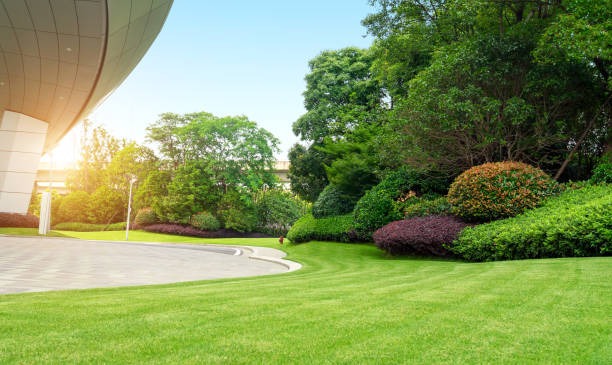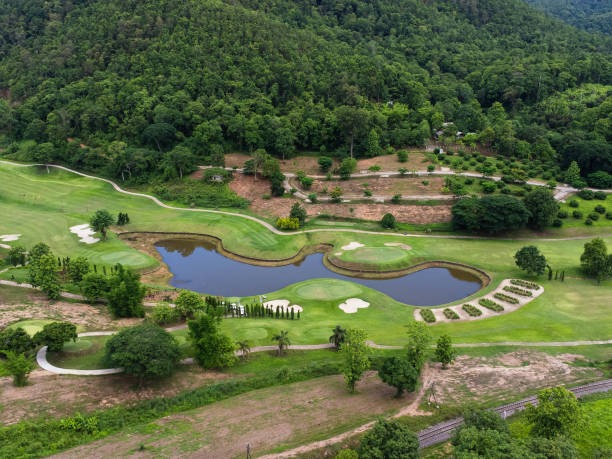Environmental Impact of Artificial Turf


Homeowners and businesses prefer these increasingly common artificial turf options. They're everywhere, actually, in public areas too. It's environmentally friendly, that's why. However, the environmental impacts are debated. Artificial turf's pros are often heavy on the advantage side. At times, drawbacks rush in your face, and it's not perfect. Sustainability matters, and reducing water usage and cutting down on harmful chemicals are quite important.
In the realm of environmental advantages linked to synthetic grass, the preservation of water is quite essential. Seeking the image of a verdant, lush expanse, natural grass turf demands massive quantities of water, much like a thirsty desert in drought-stricken zones. On the flip side of the coin, artificial grass doesn't require watering; it's like a water-saving ninja, saving thousands of gallons of water constantly every year. It's not a poor choice for areas marked by water scarcity, where indeed a drop of water is worth its weight in gold. By opting for synthetic grass, one finds oneself unwittingly aiding in a more sustainable method, making use of the earth's most cherished resource, which truthfully is water.
Artificial turf's environmental influence is somewhat beneficial, a minimization in hazardous chemicals usage. Natural grass lawns need constant maintenance, fertilizers, pesticides, and herbicides; all miserable for the environment, they could be. Chemicals infiltrate the soil and water supply, resulting in wildlife being harmed and local ecosystems getting polluted. Unsurprisingly, artificial turf lacks the necessity for such harmful substances; the environment becomes cleaner and healthier. In urban areas, especially, runoff from these lawns contaminates nearby rivers and lakes with water pollution.
The Environmental Benefits of Artificial Turf: A Sustainable Choice for Modern Landscapes


A decrease in greenhouse gas emissions is also attributed to artificial turf. Indeed, gas-powered mowers, trimmers, and blowers are classified under traditional lawn care equipment, and they're known for emitting pollutants, including carbon dioxide, into the atmosphere. Carbon footprints contribute to this kind of equipment because mowing and maintenance are lessened due to artificial turf. Manufacturers of artificial turf, on a different note, are now turning to recycled materials in their products. Environmental effects are thus lessened further.
Heat storage, artificial turf - locally, temperature effects are rendering a few questions, indeed. But hey, tech is moving, moving forward lately too. Somehow, it's tackling such issues - the ones we just mentioned. Heat, modern synthetic grass reflects, instead of soaking it all up. It gets cool to the fingertips and comfy too, especially on those sweltering days. Grass, the real kind, when you're keeping it fresh in those incessant heat zones, has its effect on the environment. Weigh it against faux turf's advantages; often, the artificial turf comes out on top.
Why Artificial Turf is a Green Solution: Water Conservation, Chemical Reduction, and More


Recyclability is crucial for the favorable effects on the environment of turf made by humans. Early synthetic types didn't allow for easy recycling, but the modern versions are designed with keeping the environment in balance. Many of the artificial turfs use materials that come from recycling, and even at the end of their lifespan, they can be taken apart and recycled -- it diminishes the waste that goes to landfills.
Artificial turf, when summed up, is linked with various benefits for the environment. It gives rise as a crucial option to curtail the ecological footprint for those who contemplate such matters. Water conservation is enabled, harmful chemicals are basically obliterated, carbon emissions go down, and recyclability is pushed ahead as a result of using artificial turf. And artificial turf is indeed a wise undertaking for those engaging in modern, sustainable landscaping. By going for artificial turf, a person is involved in more than just an action that impacts oneself and one's property assets. He or she is contributing positively towards an environment that is undergoing degradation.
Artificial Turf: Reducing Water Use and Enhancing Eco-Friendliness in Your Landscaping
Quality
Professional artificial turf contractor based out of Avondale.
How to reach us
Contact
© 2024. All rights reserved.
Hours
9am - 5pm
